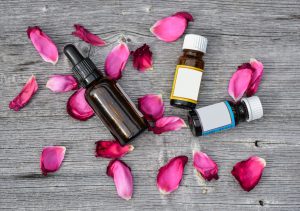
My ongoing hormonal series with essential oils came to a close recently. In this blog, I will give a brief summary of everything I covered so far and links for those who want more information. I will also provide you with a link to learn more about the naturopathic and functional medicine approach to achieving hormonal balance.
A Review of Our Journey of Hormonal Harmony with Essential Oils
It all began with the discovery of another badly extrapolated study that spurred misleading headlines. These stated that two of the most beloved essential oils, lavender and tea tree, were possible endocrine disruptors! I was saddened by this much ado about nothing because it had the possibility to unnecessarily make many people who would benefit from the healing properties of these essential oils hesitate to use them.
I defended the fact that quality essential oils are not hormone disruptors. Rather, oils are most often balancers and harmonizers because of their three very important properties:
- simultaneous physical, biochemical, and psychological effects
- innate ability to provide individualized support
- synergy
I summarized these concepts when I discussed the five key points to keep in mind when using them and any form natural medicine to support hormonal balance. This followed my other in-depth highlights on the properties of clary sage, sage, and fennel and concluded with my recent video on rose geranium.
Although essential oils are my favorite tool for providing support for the mind-body and addressing hormonal issues, they are not my sole solution.
In my latest article published on NatPath, I explain why treating hormonal imbalances is complex and personalized. In the first part of my two-article series, I go deeper into what all women should consider when balancing hormones.
You can access it here.
Thank you for reading and please feel free to comment below!
Learn more about naturopathic and functional medicine!
Join me September 22nd at my presentation in Albany, NY.
More information here.
This material is for information purposes only and is not intended to diagnose, treat, or prescribe for any illness. You should check with your doctor regarding implementing any new strategies into your wellness regime. These statements have not been evaluated by the FDA. (Affiliation link.)
Disclaimer: This information is applicable ONLY for therapeutic quality essential oils. This information DOES NOT apply to essential oils that have not been tested for purity and standardized constituents. There is no quality control in the United States, and oils labeled as “100% pure” need only to contain 5% of the actual oil. The rest of the bottle can be filled with fillers and sometimes toxic ingredients that can irritate the skin. The studies are not based solely on a specific brand of an essential oil, unless stated. Please read the full study for more information.



